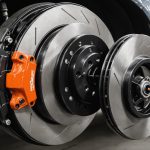Understanding Performance Air Intake Systems
Performance air intake systems are components designed to improve the airflow entering an engine, potentially boosting its power and efficiency. Central to this enhancement is the system’s ability to reduce the restrictions that typically inhibit regular air intake units. By facilitating a smoother and more abundant flow of air, these systems can contribute significantly to speed enhancement in vehicles, including popular British hatchbacks.
The paramount importance of airflow in engine performance lies in its role in the combustion process. The more air that can be mixed with fuel in the engine’s cylinders, the more explosive power is generated, enhancing both power and efficiency. Often, a well-designed performance air intake system will incorporate larger diameter intake tubes and high-performance filters to maximize air volume.
Also to see : Ultimate handbook for hydraulic brake care in uk commercial trucks: proven strategies for peak performance and durability
Moreover, performance air intake systems can have a noticeable impact on an engine’s speed and efficiency. By optimizing the air-to-fuel ratio, these systems not only improve combustion efficiency but also often result in better throttle response. This makes performance air intake a sought-after modification for those looking to enhance vehicle dynamics without extensive engine alterations. By choosing the right system for your British hatchback, it’s possible to enjoy both improved performance and greater fuel efficiency.
Installation Process for Performance Air Intakes
Installing a performance air intake system can be a rewarding DIY project. Start by gathering necessary tools, such as a socket set, screwdrivers, and pliers. Materials typically include:
In the same genre : Unlocking optimal fuel economy: proven strategies for upgrading diesel truck injection systems in the uk
- Performance air intake kit
- Sealant
- Clamps
Step-by-Step Installation
1. Preparation and Safety: Ensure your vehicle is parked on a flat, stable surface and the engine is cool. Disconnect the battery to prevent any electrical issues during the installation.
2. Remove the Current Air Intake: Carefully detach the stock air intake from the engine by loosening clamps and bolts. Set aside any reusable fasteners.
3. Install the New Air Intake System: Fit the new system into the existing space. Use the provided clamps and gaskets to ensure a tight, secure fit. Be sure to refer to the specific instructions applicable to your British hatchback as models vary.
4. Tighten and Seal: Carefully check all connections and ensure they are tightly secured. Apply sealant where necessary to prevent air leaks.
5. Test and Reconnect: Reconnect the battery and start the engine. Listen for any irregular noises which might indicate poor fitting or air leaks.
Following these steps ensures your new air intake system will integrate seamlessly with your vehicle, improving both performance and efficiency.
Potential Drawbacks of Performance Air Intakes
While performance air intakes can enhance your vehicle’s capabilities, it’s important to consider their potential drawbacks of upgrades. A common concern among enthusiasts is increased noise levels. Upgrading your air intake system often results in a louder engine, particularly when accelerating, which some may find undesirable.
Moreover, there’s a risk that modifications might impact your vehicle’s warranty and reliability. While many users report no issues, others suggest checking warranty terms, as some manufacturers may void coverage due to alterations. It’s crucial to be informed about the specific conditions related to your vehicle’s warranty before proceeding with upgrades.
Misconceptions surrounding performance air intake systems persist, particularly concerning their impact on an engine’s health. Properly installed systems should not harm your engine; however, improper installation or using low-quality components can potentially lead to inefficiencies. Ensuring that all parts are compatible and correctly fitted is essential to counteract any negative effects.
Being aware of these potential downsides enables a more informed decision-making process. For those concerned about the louder sound, choosing more refined components could help mitigate noise without significantly affecting performance. Similarly, verifying warranty terms and opting for reputable brands guarantees a balance between performance and reliability.
Types of Performance Air Intake Systems
Understanding the various types of air intakes is crucial when contemplating an upgrade. Two prominent styles—cold air intakes and short ram intakes—offer distinct advantages and should be chosen based on your vehicle’s needs and driving conditions.
Cold Air Intakes
Cold air intakes are engineered to draw cooler air from outside the engine compartment. Cooler air is denser and contains more oxygen, which can increase engine efficiency and power output. These systems typically feature longer intake tubes that place the air filter away from the heat of the engine. This setup can enhance both performance and throttle response, particularly in longer high-speed drives.
Short Ram Intakes
Alternatively, short ram intakes involve a shorter tube that facilitates quicker air flow directly into the engine. While the air isn’t cooled as extensively as with cold air intakes, the shorter path can result in improved acceleration and speed enhancement. This makes them a popular option for enthusiasts of British hatchbacks who prioritise agile, quick-throttle responses in urban environments.
Differences and Applications
Choosing between these types depends largely on specific goals and driving environments. For British hatchbacks, selecting the right intake system can significantly boost performance without sacrificing reliability or fuel economy.
Performance Benefits of Upgrading Air Intake Systems
Upgrading to a performance air intake system can lead to significant enhancements in vehicle dynamics. Firstly, one of the most notable benefits is the horsepower increase. By allowing more air to mix with fuel, these systems can increase combustion efficiency, leading to more power output and a smoother acceleration experience.
This upgrade also positively affects the throttle response. With improved airflow, engines can react faster when the driver demands speed, thus making accelerating briskly a pleasure, particularly beneficial for British hatchbacks known for their agile handling.
Over the long term, a high-quality air intake system contributes to the engine’s health and efficiency. Efficient combustion results in reduced soot and carbon buildup within the engine, potentially extending its lifespan. Furthermore, with the right setup, drivers may experience minor improvements in fuel efficiency as the engine works more effectively.
These performance benefits not only enhance the driving experience but also add value to your vehicle, making performance air intake systems a worthy investment for those keen on extracting more power and performance from their cars.
Compatibility with Different British Hatchbacks
Selecting the right performance air intake for your British hatchback starts with a comprehensive compatibility check. Ensuring that the chosen system integrates seamlessly with your vehicle is crucial for optimal performance improvement and avoiding potential issues. Vehicle-specific upgrades are designed to complement the distinctive engineering of each hatchback model, enhancing both efficiency and power.
Popular British Hatchback Models
When considering upgrades, it’s essential to identify the hatchback models widely known for their adaptability to performance modifications. Brands such as Mini Cooper, Ford Fiesta, and Vauxhall Corsa have a strong following in the performance community, making them popular choices for installation guides related to DIY air intake adjustments.
Checking Compatibility
Before purchasing a performance air intake, conduct a thorough compatibility check. This includes reviewing your vehicle’s specifications and manufacturer guidelines. Ensuring that the upgrade aligns with your engine’s layout and space constraints is vital to avoid installation challenges. Consulting with experts or utilizing installation guides that focus on British hatchback compatibility can streamline this process.
Recommended Brands and Products
Opting for recommended brands renowned for their quality ensures both durability and performance gains. Brands like K&N, AEM, and Spectre offer reliable products tailored for various hatchback models. Prioritizing recognized products not only enhances speed enhancement but also supports long-term engine health.
Cost Considerations for Upgrading Air Intake Systems
When evaluating the cost analysis of a performance air intake upgrade, it’s crucial to balance benefits against expenses. Typically, costs fluctuate between £100 to £600, reflecting brand reputation and specific model compatibility—especially pertinent when considering British hatchbacks.
Budget-friendly options are available for those seeking performance boosts without significant financial outlays. While high-end brands often tout superior materials and longer lifespans, some cheaper alternatives provide satisfactory performance enhancements, making them appealing to financially conscious enthusiasts.
For a more concrete overview, consider the following areas:
- Initial Costs: Evaluate the purchase price, installation fees, and any necessary tools or accessories.
- Return on Investment: Assess projected performance improvement and potential fuel savings, given how these values contribute to the performance air intake’s effectiveness over time.
- Long-Term Costs: Include maintenance expenses in your analysis for a holistic cost analysis. Regular cleaning and occasional part replacements can impact year-on-year spending.
Accurate evaluation of these parameters ensures an informed decision, maximizing both performance and personal finances.
Maintenance and Care for Air Intake Systems
Proper maintenance of your air intake system is crucial to extend the longevity of performance upgrades and achieve optimal results. Regular attention ensures that your system continues to function at peak efficiency without unexpected hitches.
Recommended Cleaning Intervals and Methods
To keep your system in top shape, it is advisable to clean the air intake every 12,000 to 15,000 miles. Begin by removing the air filter and gently tapping it to dislodge loose debris. Use compressed air to blow out the remaining dust, but ensure airflow follows the filter’s contours to preserve its structure. If the filter is washable, follow the manufacturer’s instructions for rinsing and re-oiling.
Signs of Wear or Damage
Inspect your air intake system routinely for any signs of wear, such as cracks in the tubing or damage to the filter. Reduced performance improvement or unusual engine noises might indicate a compromised system needing attention.
Best Practices for Maintaining Optimal Performance
Maintain air-tight connections to prevent air leaks, which can reduce long-term benefits. Consider lubricating gaskets to enhance seals during routine checks. Proper care will prolong the effectiveness of your system, sustaining the increase in horsepower and the engine’s health and efficiency gained from performance air intakes.











